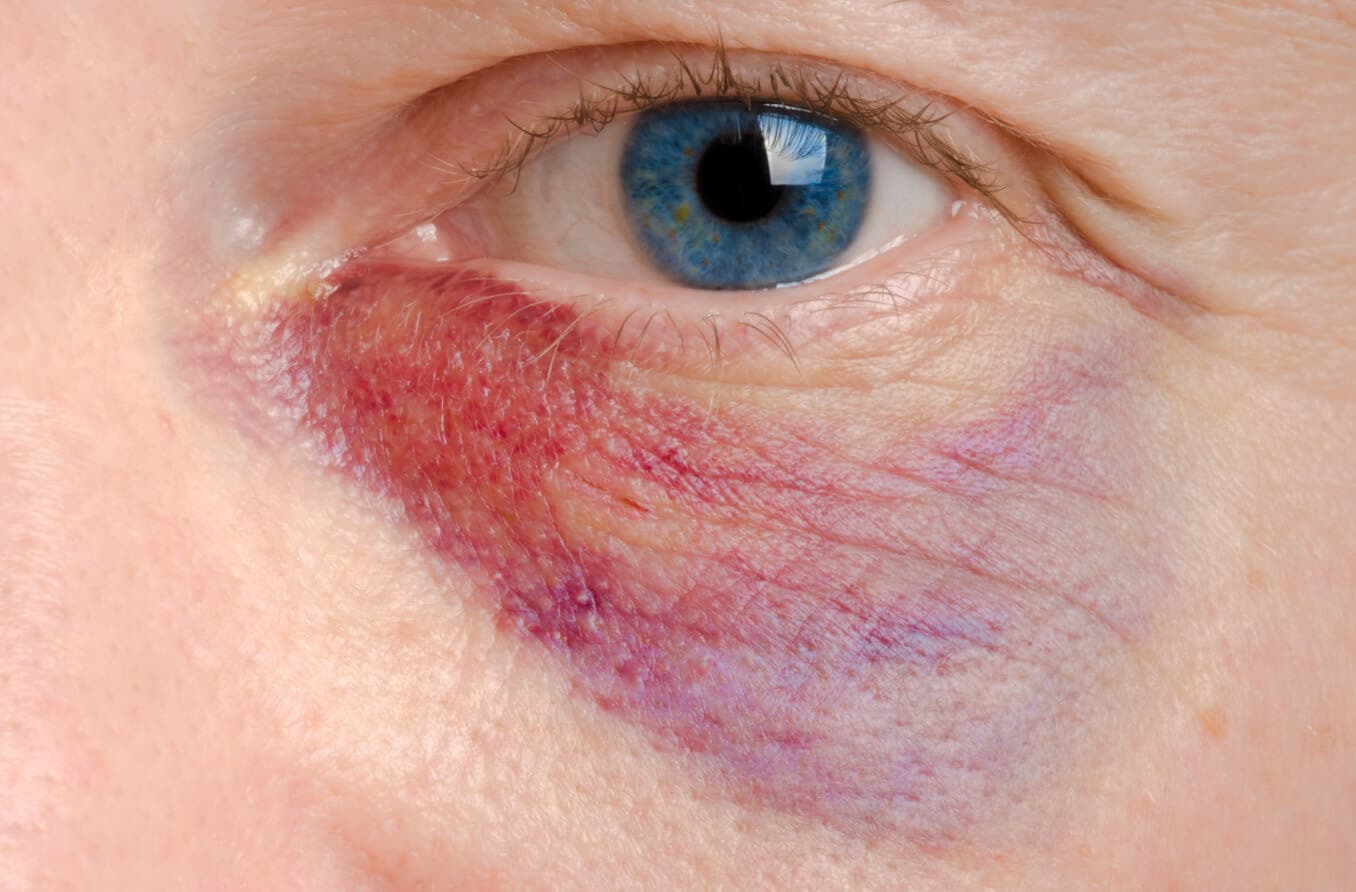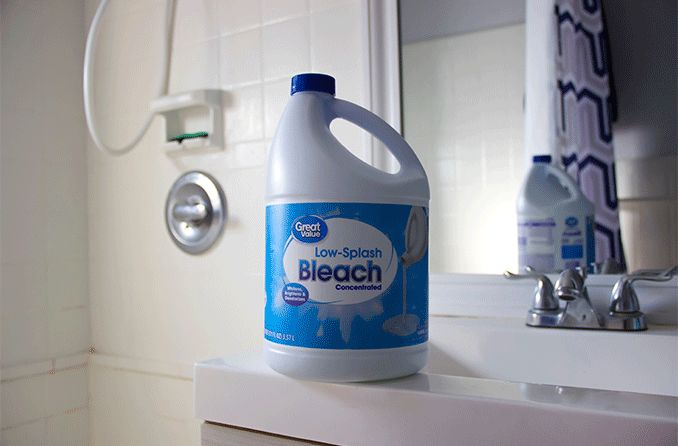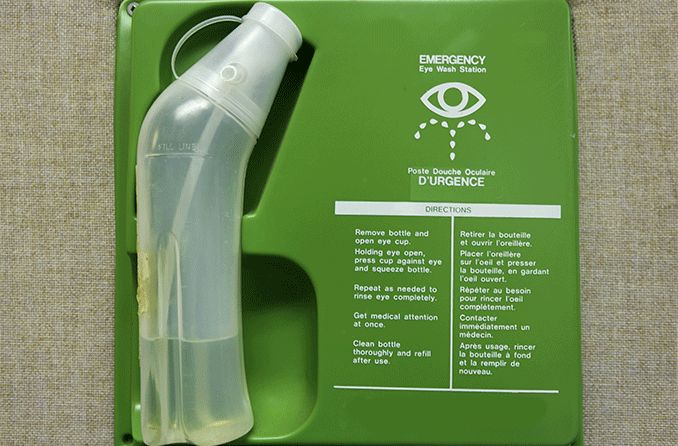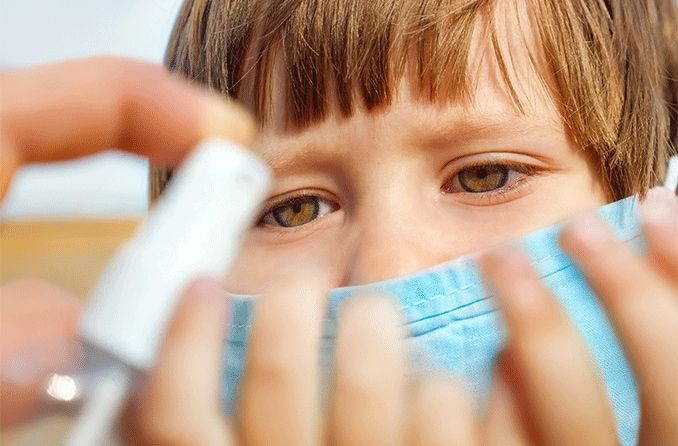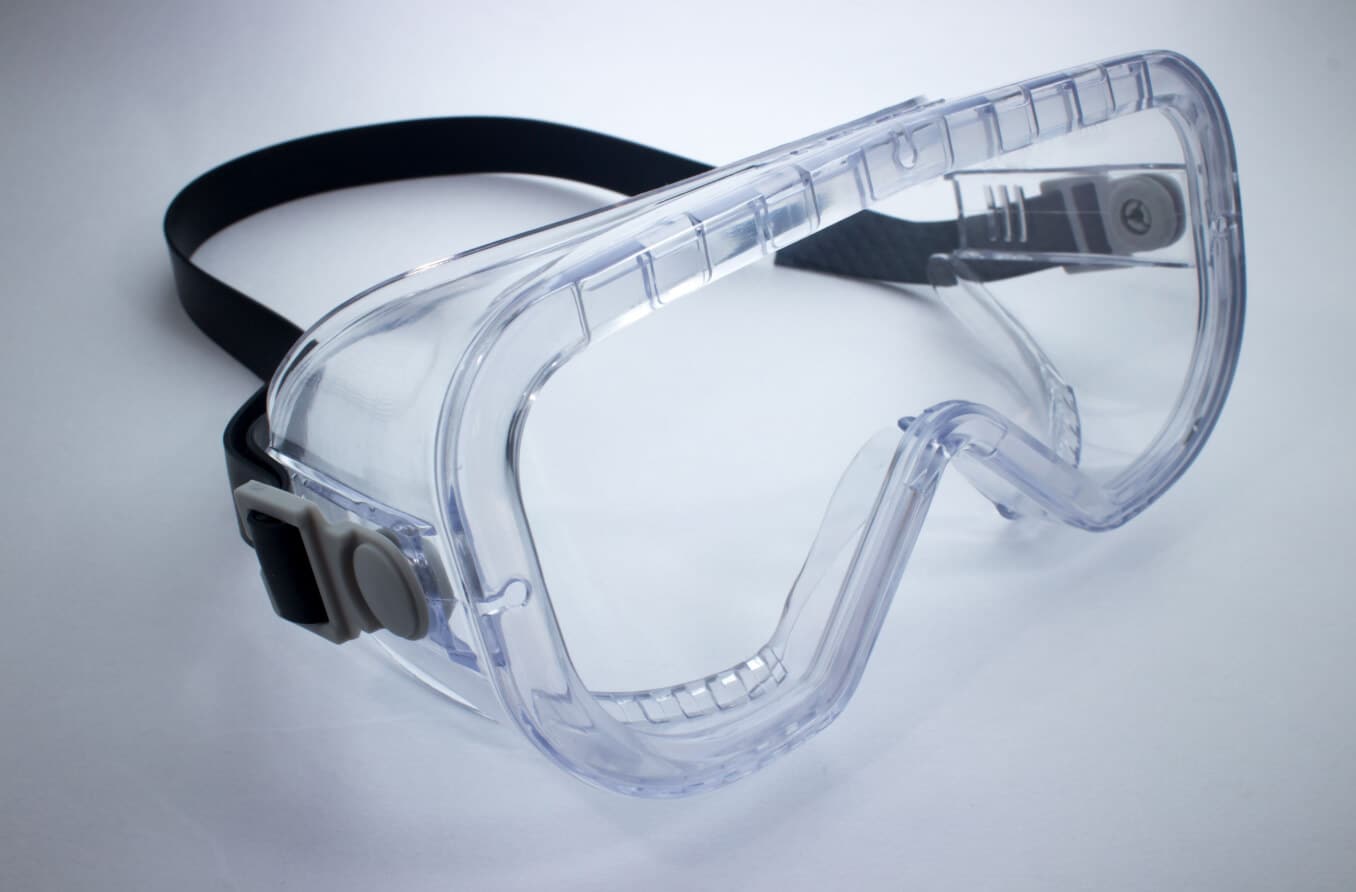What chemicals cause blindness?
There are many chemicals that can cause blindness if the burn is severe. Some of the most dangerous chemicals that can get in the eye are alkali substances, such as drain cleaners, oven cleaners and cement. Household chemicals that can cause blindness include: ammonia, hydrofluoric acid and lye.
How to prevent chemical eye burns
There are several steps you can take to prevent chemical eye burns at home.
Some tips for preventing these types of eye burns include:
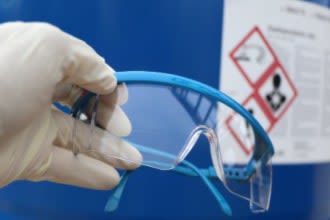
- Keep personal care products away from your eyes. Read labels on personal care products like sunscreen, and heed warnings to keep products away from the eyes. Never spray sunscreen directly on your face.
- Protect your eyes from household chemicals. It’s a good idea to wear safety glasses or a face shield while working with chemicals. That’s especially important in scenarios where you might get splashed, such as when cleaning a toilet or unclogging a drain.
- Read labels on chemicals. Learn how to use the chemical properly and what to do if it gets in your eyes. When possible, swap out more dangerous chemicals like ammonia for milder cleaners.
- Stay safe from fumes. It’s not just physical contact that can harm the eyes. Fumes can cause damage to the mucous membranes of the eyes. Avoid mixing chemicals that should not be combined, and work in well-ventilated spaces.
It’s also a good idea to make a plan for what to do if a chemical gets in your eye at home. Keep a commercial eye wash at home for these situations.
Chemical eye burn symptoms
A chemical eye burn can happen when a chemical makes contact with the eye by splashing up or getting rubbed into the eye when there is chemical residue on the fingers. In some cases, a chemical in powder form may blow or waft into the eye.
Symptoms of a chemical eye burn include:
Symptoms don’t always match the severity of a chemical eye burn. For example, some alkali substances may cause significant eye damage without causing severe pain, redness or other symptoms.
That’s one reason it’s important to seek medical attention right away if you get a chemical in your eye.
Chemical eye burn treatment
Chemical eye burn treatment starts with flushing the eye out with water, saline or eye wash immediately. Irrigating the eye right away for at least 30 minutes may reduce the severity of a chemical eye burn and help prevent vision loss. If you wear contact lenses and they do not come out during eye irrigation, take them out with clean fingers as soon as you can. It is important not to rub the eyes, as this may cause further injury.
An eye doctor, EMT, emergency department doctor or other medical professional may continue to irrigate the eye. Other treatments will depend on the type of chemical that caused the burn and its severity.
Treatment for a less severe chemical eye burn may include:
- Antibiotic eye ointment or eye drops
- Artificial tears
- Steroid eye drops
- Eye drops for chemical burn pain
More severe chemical eye burns may require additional treatment, such as:
- Removal of necrotic (dead) tissue
- Amniotic membrane transplant
- Eye surgery
Chemical eye burn healing time
Chemical eye burns are classified according to severity — from grade one (least severe) to grade four (most severe). Grade one chemical eye burns have an excellent prognosis, and the prognosis worsens as severity increases.
A minor chemical eye burn typically heals within three weeks, but more severe chemical eye burns can take longer to heal and may require surgery. With some severe burns, doctors may be unable to prevent vision loss or save the eye.
After healing, it’s important to get regular checkups from your eye doctor, especially if you had a severe burn. Possible long-term complications of a chemical eye burn may include dry eyes, glaucoma or damage to the eyelids or conjunctiva that may require further treatment.
When to get medical treatment for a chemical eye burn
A chemical eye burn should be considered a medical emergency. Flush your eye out at home continuously and call 911 or go to the emergency department. Keep irrigating your eye on the way. Getting treatment as quickly as possible maximizes your chances of making a full recovery.
READ NEXT: What to do if you get bleach in your eye


